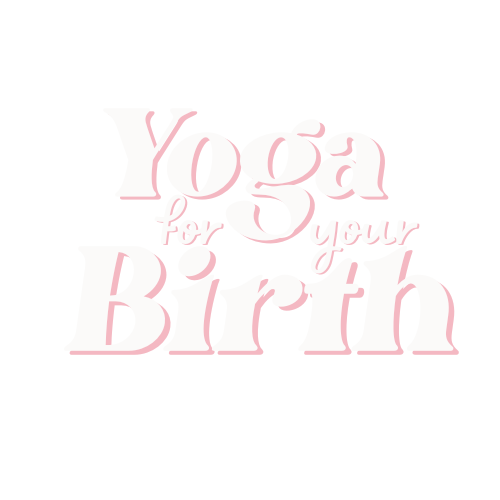Yoga Therapy for Perinatal OCD
Intrusive thoughts
Intrusive thoughts are sticky thoughts of scary things happening to your baby or of you doing scary things to your baby. They are characterized into these three categories:
1.Unwanted violent thoughts or images (about intentionally harming the baby)
2. Unwanted violent thoughts or images (about unintentionally harming the baby)
3. Unwanted sexual thoughts or images (involving the baby)
When someone experiences these thoughts for the first time postpartum, it can be startling, scary, and even bring up feelings of shame. People can become obsessive about these thoughts and organize their life around preventing these thoughts from occurring.
Common intrusive thoughts are about SIDS, other people’s ability to care for baby, and sexually assaulting baby (yes, this is very common and extremely upsetting because it’s not something the mother would do, it’s a great fear of theirs).
“Simply put, OCD is characterized by obsessions (a.k.a intrusive thoughts) and compulsions (a.k.a the "undoing" response to an intrusive thought). However, each sufferer experiences OCD differently. What's normal for some, might not be for others.” - intrusivethoughts.org
The standard treatment for OCD is antidepressant pharmaceuticals alongside Cognitive Behavioral Therapy (CBT) and Exposure Response Prevention (ERP). Outside of or in addition to these treatments, an effective way to mitigate these intrusive thoughts is by utilizing body-based and mindfulness practices to get out of the mental spiral. Body-based practices and mindfulness both allow for the intrusive thoughts to take a back seat. Neither practice will silence the intrusive thoughts, but over time they will teach you how to not react to them when they arise and is a bolster to exposure and response prevention therapy (which should be done under the supervision of a therapist).
“Mindfulness is the practice of focusing on present moments in a nonjudgemental way. It is an exercise in self-awareness and self-acceptance. Being mindful means that you notice what’s going on around and within you, and learn to accept it. Mindfulness practices can be particularly beneficial for OCD sufferers.” - instrusivethoughts.org
These somatic and yogic practices are incredible tools of support for those with intrusive thoughts so that we can become aware of them without feeling a sense of urgency to act on them.
The Research
Here are some cool studies that looked into the efficacy of mindfulness and yoga therapy as treatment options for OCD.
Yoga Therapy for Obsessive Compulsive Disorder(OCD): A Case Series from India
Unsurprisingly, many of the yoga therapy studies come from India, where yoga is understood for what it is: a science and a practice. This study used yoga therapy as an ‘add-on treatment’ for those with OCD
This case series followed patients with OCD as they participated in 1 month of yoga as an add-on treatment - all clients were on stable doses of medications prior and during the study.
Pre and post assessments for the core symptoms of obsession/compulsions, depression, and anxiety symptoms showed significant improvement in Y-BOCS (Yale Brown Obsessive Compulsive Scale) and HAM-D (Hamilton Depression Rating Scale) scores after 1 month of yoga.
These case studies are a good starting point as they indicate that yoga therapy can be an efficacious tool for patients looking for non-pharmacological treatments; in addition, it is a strong foundation for future research.
This study is really cool because the patients utilized a yogic breathing practice (I don’t know which one because I don’t have access to the full article) followed by a year’s course of therapy (also unsure what this therapy entailed) and out of the 5 patients, 3 stopped taking their medication, fluoxetine, by 7 months, and the other two lowered their dosages 25% and 50%. This is a big deal. To reduce or eliminate pharmaceutical treatment for a mental health disorder using breathing practices indicates that not only is yogic breathing a beneficial add-on treatment like the above study indicated, but that yogic breathing could be the only treatment for some patients.
First off, Rajyoga meditation is a meditation done with your eyes open gazing at a meaningful symbol while instructed to realize themselves as Self/Soul.
This study split participants into two groups: the meditation group and the nonmeditative group. The meditation group practiced rajyoga for 3 months while the nonmeditative group continued on the pharmaceutical treatment for the duration of the study. Pre and post assessments were done using the Yale Brown Obsessive-Compulsive Scale.
Put simply the rajyoga meditation group improved ~9.0 points in Y-BOCS and a ~50% reduction in symptoms whereas the nonmeditative group improved ~3 points in YBOCS and ~18% reduction in symptoms, which is still significantly significant however, not nearly as effective as the rajyoga meditation group.
This study concludes with this great statement: “The present study suggests that the RM is an effective adjunctive therapy to reduce obsessions and compulsions in patients with OCD.”
So, basically….
It looks like yogic breathwork, meditation, and mindfulness are effective not only in reducing symptoms but also reducing dependence on pharmaceuticals (especially for those who are wanting to avoid any negative side effects they experience with the drugs).
